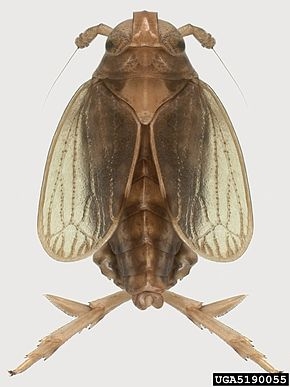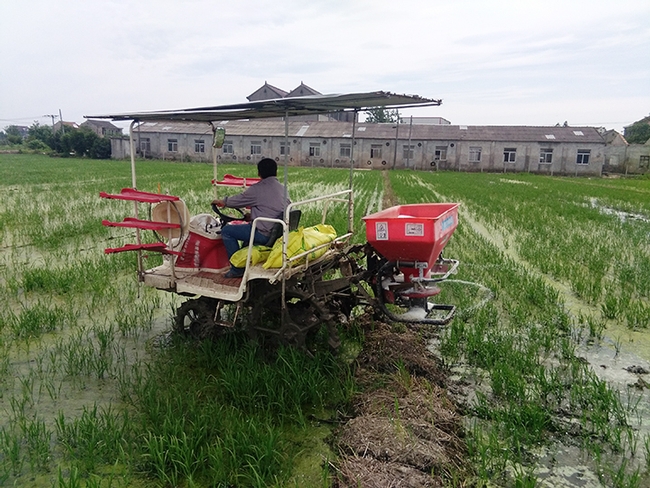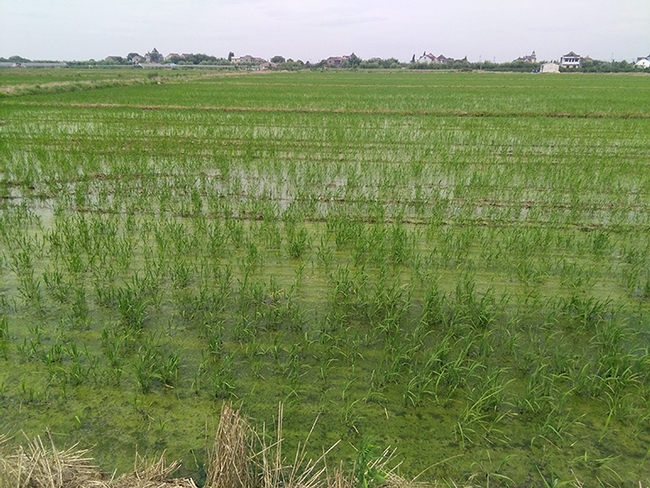- Author: Kathy Keatley Garvey

Newly published research by a seven-member international team of scientists, including UC Davis agricultural entomologist Christian Nansen, points out the dilemma that rice farmers in Bangladesh and elsewhere in Asia are facing: Should we increase fertilizer inputs on our rice fields to maximize yields but then also increase the risk of a pest outbreak by the brown planthopper, Nilaparvata lugens? The planthopper is a major pest of rice in Asia, and it is resistant to many of the available insecticides.
Their research, “Higher Fertilizer Inputs Increase Fitness Traits of Brown Planthopper in Rice,” published July 5 in Scientific Reports of the journal Nature,” is online at http://rdcu.be/tWnE.
“This study underscores the importance of considering crop fertilization as a component of integrated pest management,” said Nansen, whose role included analyzing the data collected in Bangladesh and co-authoring the research paper. “That is, the management practices, including fertilizer regimes, impact the risk of pest outbreaks--just like the risk of humans falling ill is affected by our diet, the same applies to crop plants!”
In their research, conducted in Bangladesh, the scientists investigated the effects of three principal fertilizer components--nitrogen, phosphorus and potassium—on the development of potted rice plants and their effects on fitness traits of the brown planthopper.
“Compared to low fertilizer inputs, high fertilizer treatments induced plant growth but also favored brown planthopper development,” the scientists wrote in their abstraction. “The brown planthopper had higher survival, developed faster, and the intrinsic rate of natural increase was higher on well-fertilized than under-fertilized plants. Among the fertilizer inputs, nitrogen had the strongest effect on the fitness traits of brown planthopper.”

Rice, the primary food stable for more than half of the world's population, is cultivated in at least 114—mostly developing—countries. More than 100 million households in Asia and Africa derive their income from rice production. However, due to the growing population's increased demand for more rice, and limited land for production, yields must increase by at least 70 percent over the next three decades, Nansen said. “In many developing countries, increased use of fertilizers is a response to increase demand for rice.”
Nansen is an assistant professor with the UC Davis Department of Entomology and Entomology, and an affiliate of Bangladesh Rice Institute and the Zhejiang Academy of Agricultural Sciences, Hangzhou, China. He uses his international expertise to zero in on more sustainable farming systems, better food production and fewer pesticides.
Five members of the team are based at the Bangladesh Rice Institute in Gazipur, Bangladesh: M. P. Ali, M. M. Rashid, N. Ahmed, M. Jahan, and K. S. Islam. Co-author J. L. Willers is with the United States Department of Agriculture's Agricultural Research Service, Southern Insect Management Research Unit, Stoneville, Missouri.
Over the past decade, yield losses substantially decreased in Asia due to a widespread outbreak of the brown planthopper, the researchers said.1 For example, the Central Plains of Thailand sustained persistent planthopper outbreaks for 10 consecutive growing seasons from 2008 to 2012, with losses worth $52 million or equivalent to about 173,000 tons in 2010. The same pest was responsible for losses of around 1 million tons in Vietnam in 2007, and resulted in a government freeze on rice exports.





